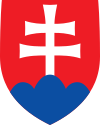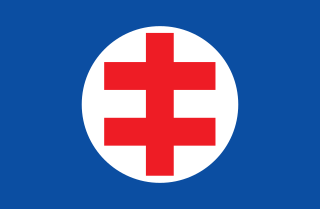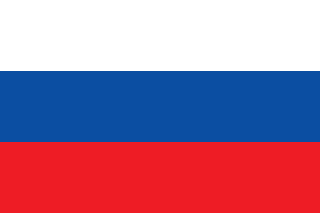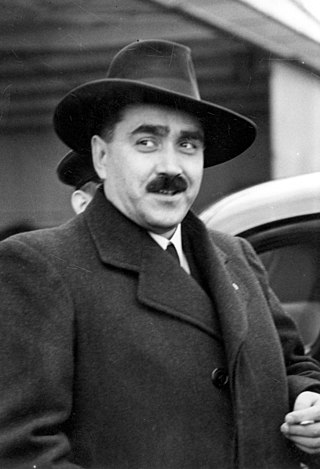| ||||||||||||||||||||||
All 63 seats in the Assembly of Slovakia | ||||||||||||||||||||||
|---|---|---|---|---|---|---|---|---|---|---|---|---|---|---|---|---|---|---|---|---|---|---|
| ||||||||||||||||||||||
| ||||||||||||||||||||||
 |
|---|
Parliamentary elections were held in Slovakia on 18 December 1938 following the German occupation of Czechoslovakia.
| ||||||||||||||||||||||
All 63 seats in the Assembly of Slovakia | ||||||||||||||||||||||
|---|---|---|---|---|---|---|---|---|---|---|---|---|---|---|---|---|---|---|---|---|---|---|
| ||||||||||||||||||||||
| ||||||||||||||||||||||
 |
|---|
Parliamentary elections were held in Slovakia on 18 December 1938 following the German occupation of Czechoslovakia.
On 6 October 1938 Slovakia declared autonomy, [lower-alpha 1] with Hlinka's Slovak People's Party (HSĽS) becoming the dominant political party in Slovakia. Some parties were partially forced to merge with HSĽS, whilst others were forbidden (Jewish parties, the Social Democratic Party and the Communist Party) or their activities were suspended (e.g. Slovak National Party which refused to "voluntarily" join HSĽS). New Hlinka's Slovak People's Party - The Party of Slovak National Unity (HSĽS-SSNJ) then organized rigged elections to strengthen its position in Slovakia and for further negotiations with the central government.
The elections were announced in the afternoon on Saturday 26 November 1938. Political parties were required to register by the next day, but the information was only officially published on Monday and in the daily press the following Thursday. [1] The campaign contained strong anti-Czech and anti-Jewish propaganda, with those seeking to vote against labelled as traitors.
The election took the form of a referendum, with voters asked only one question "Do you want a new, free Slovakia?" [2] [3] The elections were supervised by the Hlinka Guard, which had to find out how people voted. In many places, the government created separate polling stations for members of national minorities to trace their political preferences and "loyalty".
Voters were presented with a United List of 63 candidates. [2]
Of the 63 members of the United List elected, 47 were members of Hlinka's Slovak People's Party, four were former members of the now-defunct Republican Party of Farmers and Peasants, two were members of the new German Party and one was a representative of the Hungarian minority. [2]
| Party or alliance | Votes | % | Seats | |||
|---|---|---|---|---|---|---|
| United List | Hlinka's Slovak People's Party – Party of Slovak National Unity | 97.5 | 47 | |||
| German Party | 2 | |||||
| United Hungarian Party | 1 | |||||
| Independents | 13 | |||||
| Against | 2.5 | – | ||||
| Total | 63 | |||||
| Source: Teich et al., Nižňanský [4] | ||||||
Josef Tiso used the results for the reconstruction of the autonomous government, thus weakening the influence of other former parties which "voluntarily" joined HSĽS. The first session of the new Diet of the Slovak Land was held on 18 January 1939, with Martin Sokol elected as its chairman and Jozef Tiso as Prime Minister. [2] On 14 March the Diet accepted independence, following Tiso's explanation of his discussions with Adolf Hitler in which the latter had ordered the Slovak government to declare independence. [3]

Jozef Gašpar Tiso was a Slovak politician and Roman Catholic priest who served as president of the Slovak Republic, a client state of Nazi Germany during World War II, from 1939 to 1945. In 1947, after the war, he was executed for treason in Bratislava.

Hlinka's Slovak People's Party, also known as the Slovak People's Party or the Hlinka Party, was a far-right clerico-fascist political party with a strong Catholic fundamentalist and authoritarian ideology. Its members were often called ľudáci.

Andrej Hlinka was a Slovak Catholic priest, journalist, banker, politician, and one of the most important Slovakian public activists in Czechoslovakia before the Second World War. He was the leader of the Hlinka's Slovak People's Party, papal chamberlain, inducted papal protonotary, member of the National Assembly of Czechoslovakia, and chairman of the St. Vojtech Fellowship.

The (First) Slovak Republic, otherwise known as the Slovak State, was a partially-recognized client state of Nazi Germany which existed between 14 March 1939 and 4 April 1945. The Slovak part of Czechoslovakia declared independence with German support one day before the German occupation of Bohemia and Moravia. The Slovak Republic controlled the majority of the territory of present-day Slovakia but without its current southern parts, which were ceded by Czechoslovakia to Hungary in 1938. It was the first time in history that Slovakia had been a formally independent state.

Vojtech Lázar "Béla" Tuka was a Slovak politician who served as prime minister and minister of Foreign Affairs of the First Slovak Republic between 1939 and 1945. Tuka was one of the main forces behind the deportation of Slovak Jews to Nazi concentration camps in German occupied Poland. He was the leader of the radical wing of the Slovak People's Party.

Hungarians are the largest ethnic minority in Slovakia. According to the 2021 Slovak census, 456,154 people declared themselves Hungarian, while 462,175 stated that Hungarian was their mother tongue.
The Slovak National Party was a Slovak conservative and nationalist political party in the Kingdom of Hungary and then in Czechoslovakia from 1871 to 1938. The post-Velvet Revolution party with the same name sees the historical one as its ideological predecessor.

The history of the Jews in Slovakia goes back to the 11th century, when the first Jews settled in the area.

Count János Eszterházy was a prominent politician of Hungarian ethnicity in inter-war Czechoslovakia and later in the First Slovak Republic. He was a member of the Czechoslovak Parliament and of the Slovak Assembly. After the Second World War, he was illegally deported to the Soviet Union, sentenced on trumped-up charges at a show trial, and imprisoned. In the meantime he was sentenced, in absentia, to death by the National Court in Bratislava on the charges of High Treason to the State, collaboration with enemy, the breaking-up of Czechoslovakia, and his participation in an anti-democratic regime as a deputy of the Slovak Assembly. The sentence was not executed as a consequence of a Presidential pardon, following his return to Czechoslovakia from the Soviet Union. He died in prison in 1957.

Karol Sidor was a Slovak nationalist politician and journalist. Active from an early age, he was undecided about full independence and as a result was largely sidelined during the Slovak Republic.

The Second Czechoslovak Republic existed for 169 days, between 30 September 1938 and 15 March 1939. It was composed of Bohemia, Moravia, Silesia and the autonomous regions of Slovakia and Subcarpathian Rus', the latter being renamed Carpathian Ukraine on 30 December 1938.

Parliamentary elections were held in Czechoslovakia on 27 October 1929. The Republican Party of Farmers and Peasants, emerged as the largest party, winning 46 seats in the Chamber of Deputies and 24 seats in the Senate. Voter turnout was 90.2% in the Chamber election and 78.8% for the Senate. The rightward shift of the 1925 elections was reversed, with moderate centre-left groups increasing their vote shares whilst the Communist Party suffered a set-back.

Ivan Kamenec is a Slovak historian.

The Holocaust in Slovakia was the systematic dispossession, deportation, and murder of Jews in the Slovak State, a client state of Nazi Germany, during World War II. Out of 89,000 Jews in the country in 1940, an estimated 69,000 were murdered in the Holocaust.

In August 1942, Jozef Tiso, president of the Slovak State and a Catholic priest, gave a speech in Holíč, Slovakia, in which he defended the deportation of Jews from Slovakia. Referring to Jews as "parasites" and "the eternal enemy", Tiso claimed that their deportation was both economically necessary and congruent with Christian moral principles. The speech has been recognized as a key part of Tiso's moral legacy, emblematic of his complicity in the Holocaust.

Nástup was a semimonthly Slovak periodical, published between 1933 and 1940, that advocated Slovak autonomy, ethnonationalism, and antisemitism. Founded by Ferdinand Ďurčanský and his brother Ján, the magazine was oriented at younger Slovak Catholics, especially university students. Its readers, the most radical wing of the Slovak People's Party, were called "Nástupists" or "Nástup faction"; many of them had been previously affiliated with Rodobrana paramilitary and later with the Hlinka Guard paramilitary.

The Salzburg Conference was a conference between Nazi Germany and the Slovak State, held on 28 July 1940, in Salzburg, Reichsgau Ostmark. The Germans demanded the expulsion of the Nástup faction of the Slovak People's Party from the Slovak government because of its independent foreign policy, threatening to unilaterally revoke the protection guarantees that Slovakia had obtained in the 1939 German–Slovak treaty.
Persecution of Czechs occurred throughout the existence of the Slovak State (1939–1945).
From 4 to 7 November 1938, thousands of Jews were deported from Slovakia to the no-man's land on the Slovak−Hungarian border. Following Hungarian territorial gains in the First Vienna Award on 2 November, Slovak Jews were accused of favoring Hungary in the dispute. With the help of Adolf Eichmann, Slovak People's Party leaders planned the deportation, which was carried out by local police and the Hlinka Guard. Conflicting orders were issued to target either Jews who were poor or those who lacked Slovak citizenship, resulting in chaos.
Postwar anti-Jewish violence in Slovakia resulted in at least 36 deaths of Jews and more than 100 injuries between 1945 and 1948, according to research by the Polish historian Anna Cichopek. Overall, it was significantly less severe than in Poland. The causes of the violence included antisemitism and conflict over the restitution of property stolen from Jews during the Holocaust in Slovakia.